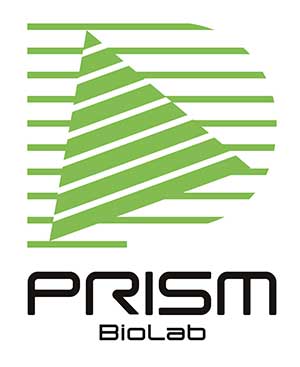Analogue Design and Structural Simplification in Molecular Design in Medicinal Chemistry
Molecular design is a crucial process of medicinal chemistry for the generation of the candidate in drug discovery and development. The approaches for the design of the next set of molecules for SAR have been developed for long: structure-based drug design and molecular generation with AI/ML are the recent examples in terms of technologies. Conceptually...
Recent Choices for PPI Detection for Experimental Confirmation
PPI (protein-protein interaction) detection methods dramatically change through the invention of novel technology and theory. PPI detection is to elucidate and validate the presence and function of a target PPI. Even though the computational approaches are improving for PPIs prediction and the technologies are rapidly developing after the advent of deep learning,1),2) it is a...
Molecular chameleons: Oral Absorption Analysis in Middle-Sized Molecules
Oral drugs diminish the stress of disease treatments. Oral bioavailability is governed by multiple parameters: membrane permeability, action of transporters, metabolism (notably the first pass effect) and so on. Cell permeability is a requisite physicochemical parameter for oral absorption. Recent advance towards the discovery of a molecular chameleon1) and innovation in analytical methods is providing...
TACnology:
TACnology is an emerging term in pharmaceutical science.1) Modulation of the posttranslational modification (PTM) machinery in nature enables us to control the natural biological process toward the desired direction. PROTAC (PROteolysis TArgeting Chimera) is the most popular TACnology but proteolysis is not the only target for drug design. Chimera molecule-mediated targeting of a particular biological...
Design of Bioisosteres: Make Ways to Rational Design
Bioisosteres are useful sets of tools for medicinal chemistry so as to endow a hit or the lead to possess the requisite pharmacokinetic and pharmacodynamic property with high activity and selectivity. As discussed in our blog,1) bioisosteres of prevalent chemical structures are still developing. However, it is often the case with a medicinal chemist to...
De novo SBDD with Automation: Current State and Perspectives
Structure-based drug design (SBDD) is a rational and reasonable way for the creation of more feasible and acceptable molecules to the target protein of interest. Generative AI is changing our way of life, and it has a huge impact on scientists and researchers. Recent development of generative AI-mediated structure-based computational design is opening the utilization...
Challenges of Induced Fit Docking Between Protein and Ligand/Peptide
Prediction and selection of a ligand binding mode with high accuracy is still a difficult challenge in molecular docking even in this age of high computational capacity. Numerous challenges have been performed for over a century due to the overwhelming demand for protein-ligand complex in drug discovery. Induced fit is one of the intriguing but...
Bioisosteres for Overcoming Property Issues: Prospective Methodologies are in Need
Switching a problematic functional group to a surrogate bioisostere is a powerful strategy for pharmacophore-based lead generation and optimization. Carboxylic acids,1),2) peptide bonds,3) amines as well as aromatic rings including phenols and indoles often displays crucial role as the constituents of pharmacophores. However, a severe struggle would arise when the key functional group possesses undesirable...
Advance in Synthetic Data: Current State and Challenges
Data is essential for decision making and its importance is expanding after the emergence of artificial intelligence (AI)-based technologies and methods. Even before the advent of AI, statistical analysis of real data has been widely performed to support the humans’ predictions. In the field of healthcare, however, data collection encounters the challenges of privacy due...
A Rewritten Textbook in Era of Digitalization, Personalization, Collaboration and Innovation
Innovation in technology have brought about paradigm shifts in pharmaceutical science. The landscape of pharmaceutical industry has changed its appearance over the decades, driven by the necessity to adapt itself to consumer expectation, regulatory forces and demographic shifts. It is substantially required for pharma to keep themselves updated and adjusted to the upcoming era so...

